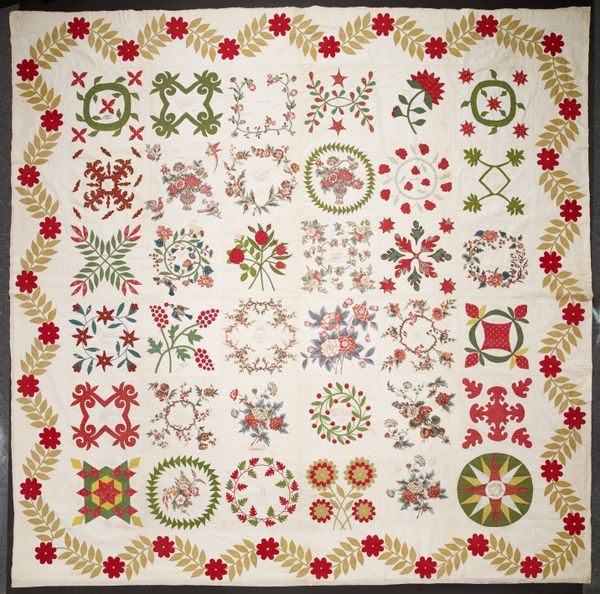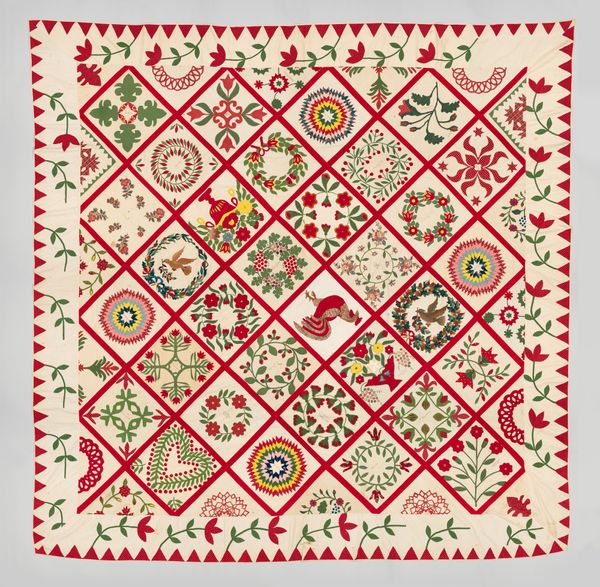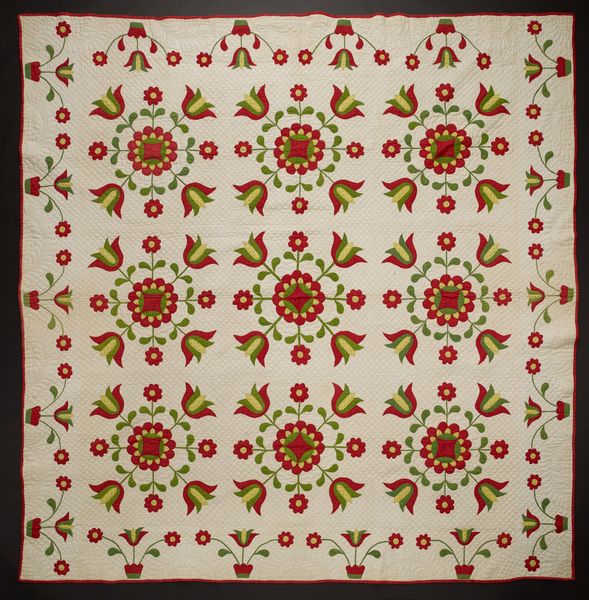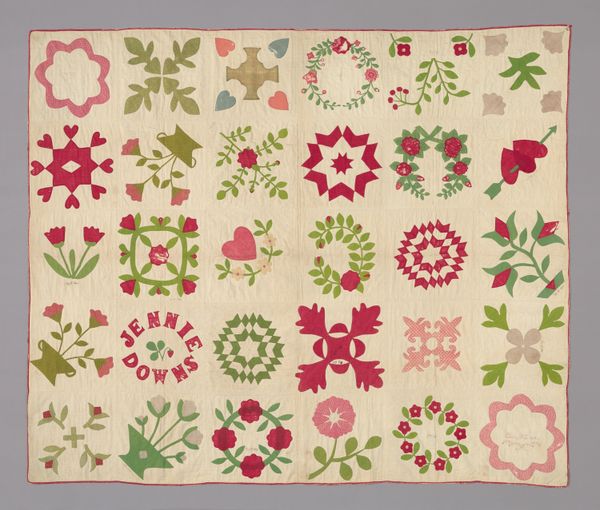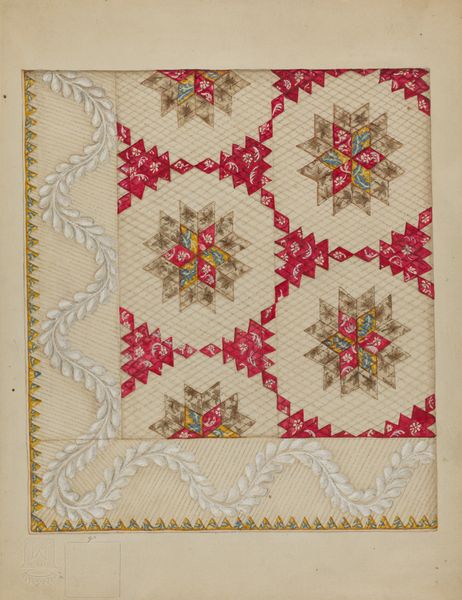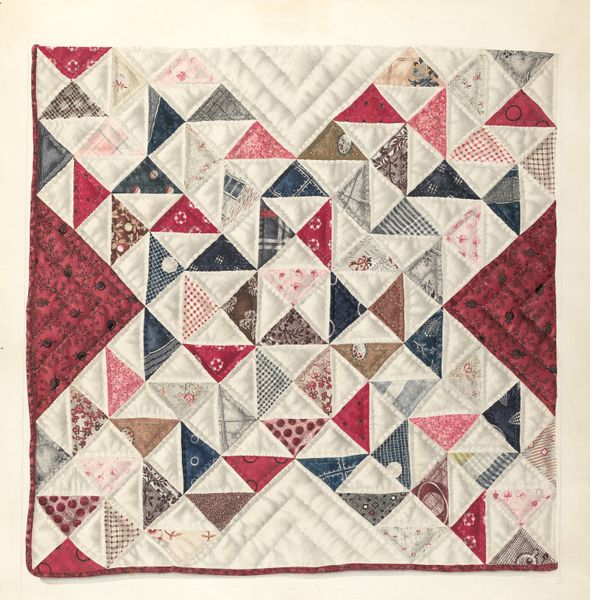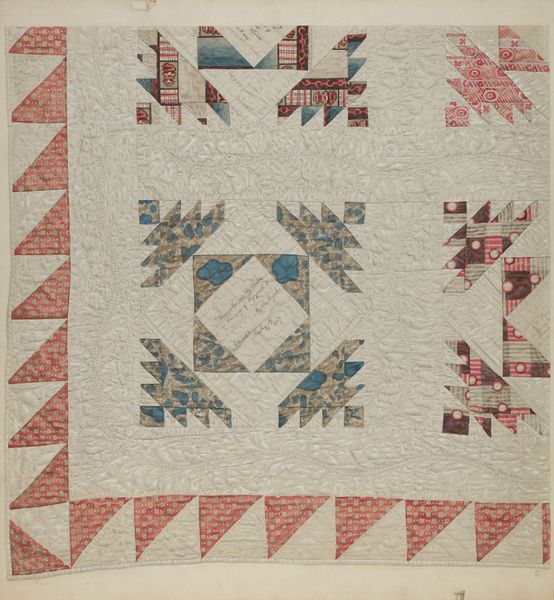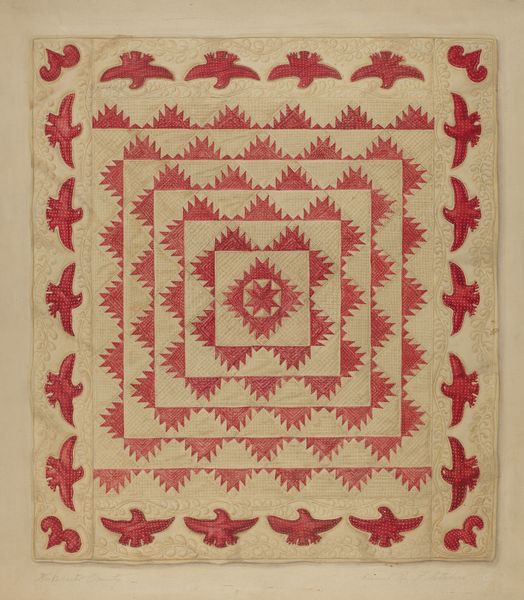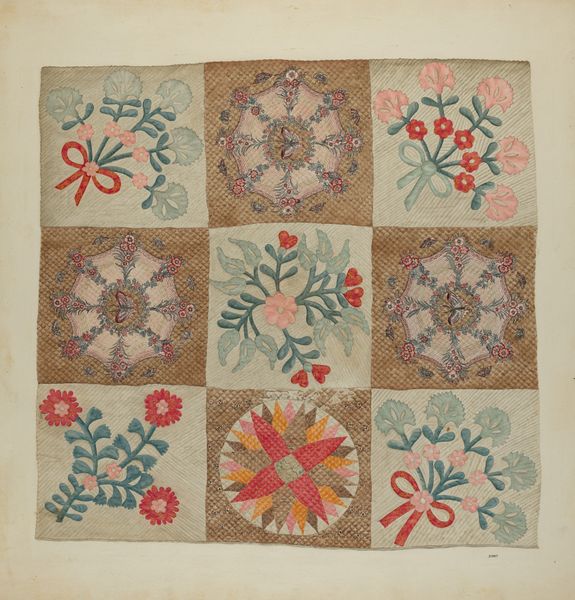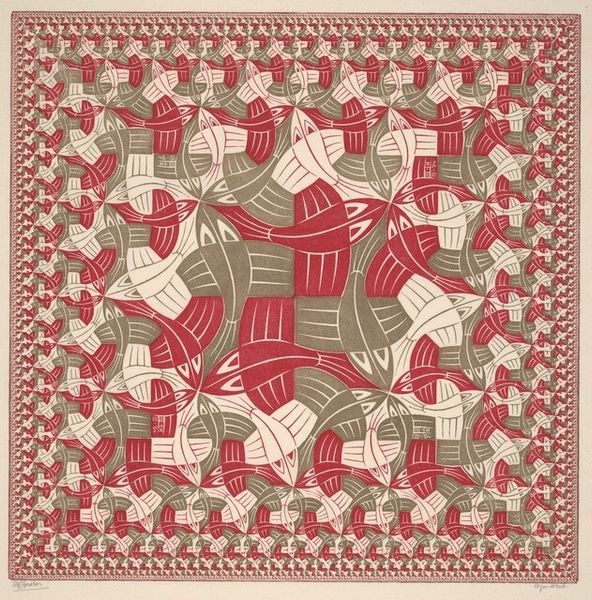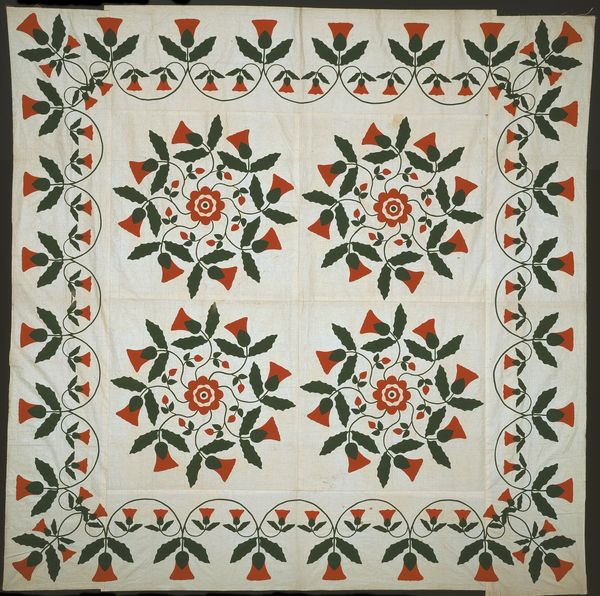
Quilt, Album pattern 1852 - 1860
0:00
0:00
textile
#
folk-art
#
textile
#
geometric pattern
#
folk-art
#
organic pattern
Dimensions: 83 1/2 x 84 1/2 in. (212.1 x 214.6 cm)
Copyright: Public Domain
Curator: Let's turn our attention to this stunning American quilt, dating from 1852 to 1860. It's called "Quilt, Album pattern," and was made by the First Reform Churches of Fishkill and Hopewell. It now resides here at The Metropolitan Museum of Art. Editor: My initial reaction is one of visual calm amidst intricate detail. The repetitive geometric and organic patterns invite the eye to wander and then settle, offering a sense of comfort and familiarity. Curator: It's interesting that you use the word "comfort." These album quilts were often made collaboratively, a communal effort that involved cutting, piecing, and stitching. We need to think about this as skilled, and gendered, labor. What does the quilting process tell us about the role of women in mid-19th century American society? Editor: Absolutely, and the geometric motifs themselves! Look at how they are reminiscent of fractals, repeated infinitely, each square offering variations on a visual theme of blossoming life. The flowers, leaves, and geometric forms could represent cycles of nature, faith, and community, bound by those borders into a neat and ordered reality. Curator: This textile represents a tangible convergence of utility, artistry, and community. We can consider the different material qualities. Look at the subtle texture achieved by quilting—dense stitching in some areas versus a looser hand elsewhere, it speaks to a functional imperative. It needed to last. It had to provide warmth. But, more than that, there's a visual language that expresses shared ideals. Editor: Consider the colors; a limited palette of reds and blues, with greens appearing less frequently, it really creates such strong symbolism and unity in the geometric elements. I see the red as energy and passion while the cooler blue is a symbol of faithfulness and piety. These symbols tell a larger cultural story beyond its individual creators. Curator: And of course, the edge embellishments! That scalloped border and looping ribbon detail elevate this far beyond purely practical consideration. This piece allows us to reflect upon a creative mode often dismissed. This is about more than craft, it's an essential document of social history! Editor: Thinking about all these elements and visual stories certainly reframes how I view what at first seems to be merely a cozy blanket. Curator: Agreed, delving into both the construction and imagery here grants us insight into 19th-century America and material practices that deserve greater critical awareness.
Comments
No comments
Be the first to comment and join the conversation on the ultimate creative platform.
